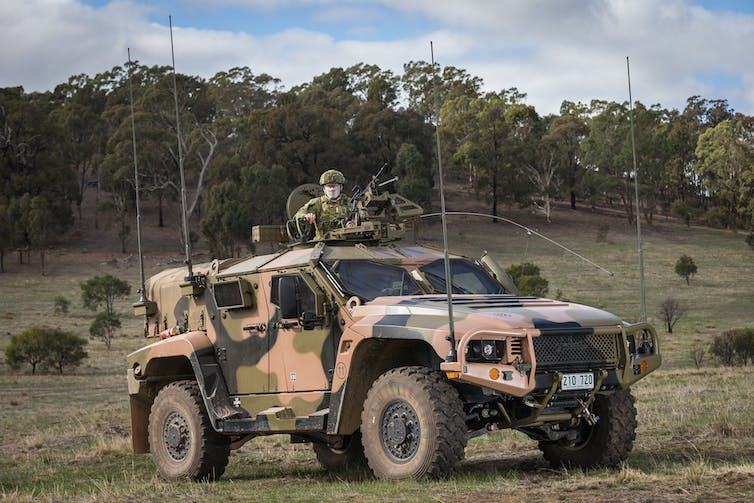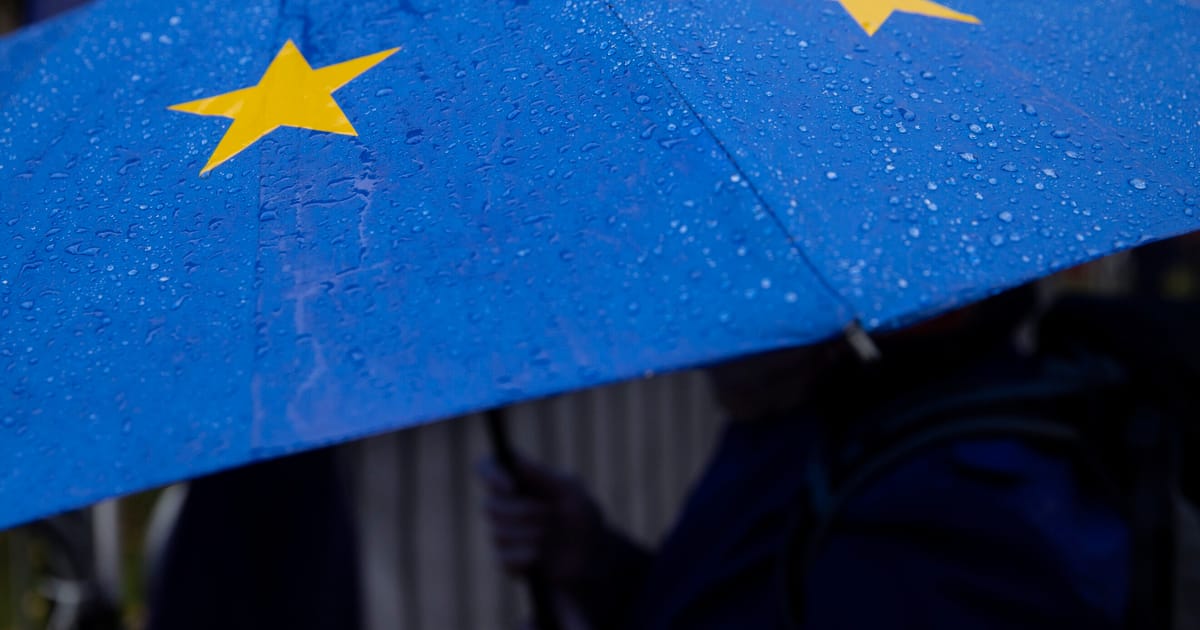This week, Australia announced its latest package of military and humanitarian support for Ukraine, totalling approximately A$110 million.
The package comprises 70 military vehicles, which include 28 M113 armoured personnel carriers and other support vehicles (trucks, trailers and “special operations vehicles”).
The package also includes a supply of 105mm artillery shells, which are desperately needed by Ukrainian forces. The Ukrainian government says it will need one million rounds of ammunition this year.
While this support package was welcomed by the Ukrainian government, it has been criticised by some for being too small, tokenistic and not providing the level of equipment and support needed to counter Russia’s invasion.
Why has this latest package been criticised?
The primary issue with the package is the supply of the M113 armoured personnel carriers. Ukraine has previously requested Australian designed and built Hawkei armoured vehicles, going so far as to describe the Hawkei as “its new crush”.
However, Australia has so far declined to provide these. The M113 armoured personnel carriers that Australia is sending to Ukraine date back to the Vietnam War. Although the vehicles have undergone a variety of upgrades over the years, they are widely considered to be obsolete in modern warfare.
Australia is in the process of retiring them in favour of a new, modern design of armoured personnel carrier. The Defence Department itself has said the M113 carriers are obsolete:
[they] are no longer able to counter the current and emerging threats presented in our operating environment.
In an address to the Indian Ocean Defence and Security Conference in Perth last year, Lieutenant General Simon Stuart, the new Australian Army chief, also said:
The combined arms fighting system that protects our soldiers today has at its core a 60-year-old armoured personnel carrier. […] We can and we must do better — and we have a plan to do so.
Why are we not giving the Ukrainians what they want
The government is currently unable (or perhaps unwilling) to supply the Hawkei vehicles that Ukraine has requested, on the advice of the Australian Defence Force. As Prime Minister Anthony Albanese said this week:
On Hawkei, I know that has been raised, the advice is that would not be the best way to provide assistance to Ukraine.
Defence has reportedly rejected providing Hawkei vehicles to Ukraine due to an unresolved braking issue and a limited supply of spare parts, which it asserts would make the Hawkei currently unsupportable in combat.
CPL Nunu Campos/PR handout/Department of Defence
However, Ukraine would be well aware of these issues. And its request (and enthusiasm) for this particular vehicle means the government likely sees a need for the Hawkei on the battlefield – one that is unlikely to be met by the M113s.
It is difficult to conclusively determine why Australia has chosen such a military hardware composition for its latest support package and why it is denying Ukraine the assistance it is requesting.
There is still a chance Albanese will offer more support over the coming months, for example, at the upcoming NATO conference he will attend in July.
Why can’t the West agree on how much military support to send to Ukraine?
We have other hardware we could offer
Much has been made recently about the potential for Ukraine’s allies to supply F-16 fighter jets to Kiev. The F-16 would provide Ukraine with a formidable air combat and strike capability that is crucial for pushing back Russian forces.
Ukraine’s air force currently utilises old Soviet-era fighters, predominantly MiG-29s and Sukhoi Su-27s, which have been jerry-rigged to deploy Western munitions.
After dragging its feet for months, the US recently announced it will approve allied exports of F-16 jets to Ukraine. The move was welcomed by countries like Denmark, which maintains a fleet of 40 F-16s, of which about 30 are operational and could be supplied to Ukraine.
However, another option exists for Australia: its retired fleet of F/A-18 classic Hornets. Australia has 41 of these fighter jets in storage, which Ukraine has reportedly been looking into, although has not yet formally requested. Negotiations are reportedly underway on a deal.
The F/A-18 has some advantages over the F-16 for Ukraine’s purposes. First, it is a “navalised” fighter, meaning it has a strengthened undercarriage that would allow it to land and take off from rougher airfields (and potentially roads), unlike the F-16 which requires highly maintained airfields.
This would give the Ukrainian air force more flexibility and increase the chances the aircraft would survive longer in combat. In more remote locales, these jets would also be more difficult to detect when not flying.
Australia’s version of the F/A-18, the F/A-18A, has also been heavily upgraded, making its fleet roughly equivalent to the slightly more modern F/A-18C standard.
Further, given Australia’s jets have not been deployed in a naval context (on, say, aircraft carriers) and thus subjected to saltwater environments, they are in good condition.
There are, of course, some issues with Ukraine receiving F/A-18 jets.
First, it would require export approval from the US, which is required for all US military hardware to be resold or re-exported. This, however, would not likely be difficult to obtain.
Perhaps more significantly, it would also require Ukraine’s pilots to be trained on the F/A-18 platform. However, this will be an issue for the F-16, or any other Western fighter jet sent to Ukraine’s air force.
Why Australia should do more
Australia’s distance from the conflict means it isn’t as likely to provide as much support as other states in closer geographic proximity to Russia.
The European Union, for instance, just announced it will increase its military aid fund to Ukraine by a further €3.5 billion (A$5.7 billion).
But as Matthew Sussex, one of Australia’s leading Russia experts, has pointed out, Russia is a strategic competitor to Australia that will increasingly pivot its attention to the Indo-Pacific region.
As such, our geographic distance is no excuse for weak support to a state attempting to counter an illegal and devastating invasion by Russia. We can, and should, be doing considerably more.
Ukraine war: how US-built F-16 ‘Fighting Falcon’ could help Kyiv move on to the offensive



